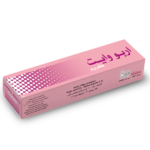CALENDULA
Pharmacological effects:
Calendula oil is still used medicinally. The oil of C. officinalis is used as an anti-inflammatory and a remedy for healing wounds.[10] Calendula ointments are skin products available for use on minor cuts, burns, and skin irritation;[11] however, evidence of their effectiveness is weak.[11][12]
Plant pharmacological studies have suggested that Calendula extracts have antiviral, antigenotoxic, and anti-inflammatory properties in vitro.[13] In herbalism, Calendula in suspension or in tincture is used topically for treating acne, reducing inflammation, controlling bleeding, and soothing irritated tissue.[14][15] Limited evidence indicates Calendula cream or ointment is effective in treating radiation dermatitis.[16][17] Topical application of C. officinalis ointment has helped to prevent dermatitis and pain; thus reducing the incidence rate of skipped radiation treatments in randomized trials.[15]
Calendula has been used traditionally for abdominal cramps and constipation.[18] In experiments with rabbit jejunum, the aqueous-ethanol extract of C. officinalis flowers was shown to have both spasmolytic and spasmogenic effects, thus providing a scientific rationale for this traditional use.[18] An aqueous extract of C. officinalis obtained by a novel extraction method has demonstrated antitumor (cytotoxic) activity and immunomodulatory properties (lymphocyte activation) in vitro, as well as antitumor activity in mice.[13]
Calendula plants are known to cause allergic reactions,[19][20] and should be avoided during pregnancy.[19]
Pregnancy Dangers:
Several of the conditions that calendula is used to treat occur during pregnancy, but its use could result in harm to your developing baby. Since it is used to start menstruation, taking it internally during pregnancy could cause uterine stimulation, which may result in premature labor. No studies have been done regarding the safe use of calendula during pregnancy and breastfeeding, so it should be avoided until your baby is weaned
Topical Use During Pregnancy
The National Institutes of Health recommends avoiding all use of calendula while pregnant, as it may be unsafe. However, some women have applied it to prevent or reduce the appearance of stretch marks. It is most often combined with vitamin E oil and other herbs to limit exposure. This treatment can also be applied to the perineum in a compress or used in a sitz bath after birth to help heal an episiotomy wound. Use calendula oil only under the direction of your obstetrician to be sure you are doing so in a safe way
11_Okoh, O. O., et al. (2008). The effects of drying on the chemical components of essential oils of Calendula officinalis L. African Journal of Biotechnology 7(10) 1500-02.
Calendula ointment entry in the public domain NCI Dictionary of Cancer Terms
12_ Matthew J. Leach (2008). “Calendula officinalis and Wound Healing: A Systematic Review”. Wounds. 20 (8).
13_ Jimenez-Medina, E., et al. (2006). A new extract of the plant Calendula officinalis produces a dual in vitro effect: cytotoxic anti-tumor activity and lymphocyte activation. BMC Cancer. 6:6.
14_ Duran, V; Matic, M; Jovanovć, M; Mimica, N; Gajinov, Z; Poljacki, M; Boza, P (2005). “Results of the clinical examination of an ointment with marigold (Calendula officinalis) extract in the treatment of venous leg ulcers”. Int J Tissue React. 27 (3): 101–6. PMID 16372475.
15_ Pommier, P., et al. (2004). Phase III randomized trial of Calendula officinalis compared with trolamine for the prevention of acute dermatitis during irradiation for breast cancer. J Clin Oncol. 22(8) 1447-53.
16_ McQuestion, M. (2006). Evidence-based skin care management in radiation therapy. Semin Oncol Nurs. 22 163-73.
17_ Bolderston, A., et al. (2006). The prevention and management of acute skin reactions related to radiation therapy: a systematic review and practice guideline. Support Care Cancer. 14 802-17
18_ Bashir S, Janbaz KH, Jabeen Q et al. (2006). Studies on spasmogenic and spasmolytic activities of Calendula officinalis flowers. Phytother Res. 20:906-910.
19_ “About Herbs, Botanicals & Other Products: Calendula”. Memorial Sloan-Kettering Cancer Center 20_ Reider, N; Komericki, P; Hausen, BM; Fritsch, P; Aberer, W (2001). “The seamy side of natural medicines: Contact sensitization to arnica (Arnica montana L.) and marigold (Calendula officinalis L.)”. Contact Dermatitis. 45 (5): 269–72. doi:10.1034/j.1600-0536.2001.450503.x
 Previous Post
Previous Post Next Post
Next Post